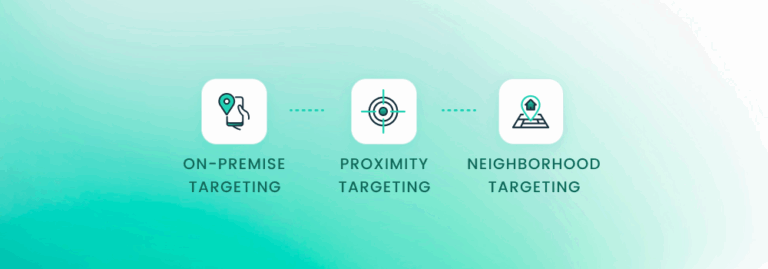What is Cost Per Visit (CPV)?
CPV (Cost Per Visit) is a guaranteed performance buying model in which marketers only pay for ads that result in a store visit. Introduced to the market by GroundTruth in Spring of 2017, the Cost Per Visit buying model removes the risk or guesswork of traditional media buying and shifts accountability from buyer to partner, bringing improved transparency and simplicity to the advertising industry.
We’ve come a long way since the days when CPM (cost per thousand impressions) was everything. The metrics we use to buy advertising have evolved to keep pace with new technologies, consumer behaviors, and industry trends. Performance-based models like Cost Per Visit (CPV) marketing are now allowing marketers to secure the results they need—guaranteed. With all of that said, you may be wondering: is there still value in CPM?
The answer is yes. CPV doesn’t replace CPM—rather it complements it. Together, these two models can deliver the reach and the precise, real-world results advertisers need. While CPM and CPV play different roles, both should be a part of every marketing strategy. Here’s how you can get the most out of using them.
What’s the Difference Between CPM and CPV?
In simple terms, CPM stands for cost per thousand impressions where as CPV stands for cost per visit. CPM is used within marketing to evaluate the cost of advertising impressions which in turn helps to determine the return of investment of a project. CPM is typically used in brand awareness-building campaigns.
CPV is used in mobile advertising campaigns that include videos or pop-up ads and is designed to provide marketers with the exact costs of advertising per view. This metric can only be used for video ads or pop-ups as it calculates the cost an advertiser pays for a single watch or view.
CPV vs. CPM
CPV, the only guaranteed performance model for driving offline visits, is ideal if your KPIs are focused on the real world outcomes, such as generating more foot traffic and increasing the frequency of in-store visits from past customers. That’s because CPV marketing allows you to transact on a visit, giving GroundTruth the flexibility to develop the best campaign strategy to deliver the offline outcome you’re looking for.
Meanwhile, CPM is great for those who want to reach a particular audience. Building on the locations people visit, and layering in demographic information, you can pinpoint customers like “soccer moms” or “business travelers” and get your desired number of impressions.
Is CPV better than CPM?
Deciding which method to use depends greatly on the type of campaign and goals you want to achieve with your marketing efforts. CPV is ideal for mass appeal and targeting campaigns whereas CPM is more suitable for niche and scalable campaigns.
Although Each model has its strengths, and how you tap into them boils down to who you’re trying to reach and what you want the outcome to be. In the grand scheme of things, though, you need to capitalize on those strengths by including both CPV and CPM in your marketing strategy.
CPV & CPM Marketing – A Perfect Partnership
Let’s consider a few examples.
Imagine you’re a marketer at a national department store. Your visits are down, so you want to drive more people through your doors. For this, you’ll want to implement CPV.
But as you know, marketing is rarely that simple. At the same time that you’ve been tasked with driving visits, your team is gearing up for Mother’s Day promotions and a new activewear brand is ready to be showcased in your stores.
CPM is effective at creating sales lift among specific audience group, from “dads” to “jewelry shoppers” for Mother’s Day and “fitness enthusiasts” for your activewear launch. In this scenario, you clearly need both models in your marketing mix. Both serve your goal of driving visits, but one is a direct performance model while the other is a branding and audience play.
Here’s another example. You’re a marketer at a casual dining restaurant, and you’ve just discovered that your average customer visits you just once a year. At the same time, you’re offering a new “early bird” dinner special. Here, CPM can help you reach your target audiences of “baby boomers” and “budget-conscious diners,” while CPV can help you increase the frequency of your customers’ visits by driving people back into your restaurant.
Varied Objectives Call For a Multi-Faceted Strategy
Think about CPV vs. CPM in the context of traditional digital marketing. Would you stop running search ads because you’re also investing in display? Absolutely not. The complexities of the modern-day marketing landscape require a multi-faceted solution that meets all of your objectives and synchronizes your campaigns.
The bottom line is that CPV is a performance-based measurement solution that’s designed to drive a steady stream of new visitors and up the frequency of visits from your loyal customers. But there are always new products, seasonal sales, and other events to promote, and CPM is great at meeting those goals.
When used in tandem, these two marketing models can drive people to your location while helping you reach your desired audience—all while using the power of location based advertising to increase brand awareness and lift.
To learn more about the value of Cost Per Visit and location targeting, contact us today.





